Udaipur travel - India, Asia
Udaipur, located in the southern part of Rajasthan, India, is often referred to as the "City of Lakes" due to its picturesque lakes and stunning landscapes. It is situated at an elevation of about 598 meters (1,962 feet) above sea level and is surrounded by the Aravalli mountain range, contributing to its scenic beauty. Known for its stunning lakes, including Lake Pichola and Fateh Sagar Lake, the city offers breathtaking views and a serene atmosphere, making it a popular romantic destination. Culturally, Udaipur is significant for its royal heritage, having been the capital of the Mewar Kingdom, and it hosts various festivals that celebrate local arts and crafts. Travelers are drawn to Udaipur not only for its picturesque landscapes and historical sites but also for its vibrant local cuisine, featuring dishes like dal baati churma and gatte ki sabzi.
Population: Estimate 639,000 people (as of 2024)
Economy: Udaipur's economy relies primarily on agriculture, minerals, and a small amount of tourism and handicrafts. Its strategic location in Madhya Pradesh provides access to markets and resources that support its economic activities. Agriculture remains a significant part of Udaipur's economy, with major crops including maize, jowar, wheat, and mustard.
Landmarks: Boras Narmada's Ghat, Shahid Smarak, Walled Enclave at Deori, Biranj Nadi River, Ikyawan Nadi River
India
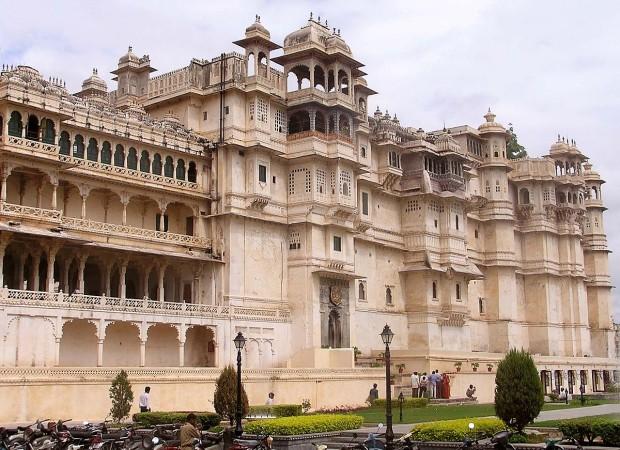
Overview of Udaipur
History & Cultural Influence
Udaipur, founded in 1559 by Maharana Udai Singh II, serves as the historic capital of the Mewar kingdom in Rajasthan. Established as a strategic response to Mughal invasions, the city is renowned for its stunning lakes, including Lake Pichola, and majestic palaces like the City Palace, which showcases a blend of Rajput and Mughal architectural styles. The rich history of Udaipur is marked by tales of valor, particularly the legendary Maharana Pratap, who fiercely resisted Mughal dominance, instilling a sense of pride and resilience in the local culture.
Culturally, Udaipur is a hub of traditional arts, music, and dance, with festivals such as the Mewar Festival celebrating its heritage. The city’s cuisine, influenced by its royal past, features dishes like dal baati churma and gatte ki sabzi, adding to its allure.
Interaction with The Locals
Visitors to Udaipur can expect to interact with friendly and hospitable locals, who are generally warm and welcoming towards tourists. The city has a population predominantly comprising Rajputs, Brahmins, and Jains, with a rich cultural tapestry that reflects its historical significance as the capital of the Mewar Kingdom.
The general attitude towards tourists is positive, as locals take pride in their heritage and are often eager to share stories about their city and its traditions. However, visitors should be prepared for some light-hearted persistence from shopkeepers and vendors in the bustling markets, as they may approach with offers to sell their goods.
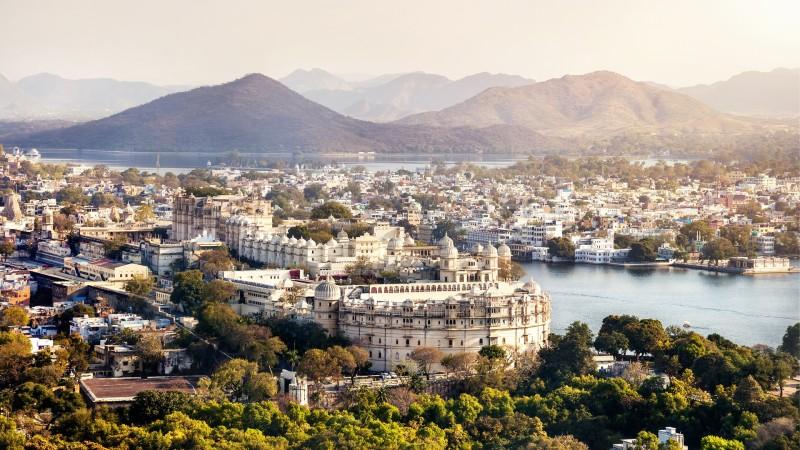
Udaipur landscape - © gather
Top attractions in Udaipur
Discover Udaipur's timeless charm with a visit to the stunning Lake Pichola, where serene boat rides offer breathtaking views of the City Palace and Jag Mandir. Don't miss the romantic Saheliyon Ki Bari, a lush garden oasis that promises tranquility amidst fountains, marble pavilions, and beautiful lotus pools.
City Palace
Location: City Palace Complex, east bank of Lake Pichola, Udaipur, Rajasthan
Standing majestically on the eastern banks of Lake Pichola, the City Palace is a stunning blend of Rajasthani and Mughal architecture, showcasing the grandeur of the Mewar dynasty. The complex, one of the largest of its kind in Rajasthan, features ornate courtyards, balconies, and towers that offer breathtaking views of Udaipur’s lakes and surrounding hills. Within the palace, you’ll find a museum filled with royal artifacts, intricate miniatures, and historic weapons, providing a fascinating insight into Udaipur’s regal past. Whether you're a history buff or an architecture enthusiast, the City Palace is a must-visit.
Lake Pichola
Location: Udaipur, Rajasthan
Lake Pichola is an enchanting artificial lake that reflects the beauty of Udaipur's skyline, with historic palaces, temples, and majestic hills surrounding its shores. A boat ride on the tranquil waters of Lake Pichola is the perfect way to experience Udaipur’s charm, offering stunning views of the City Palace, the floating Lake Palace, and the picturesque Jag Mandir. The lake, originally created in 1362, remains one of the most serene and scenic spots in the city, ideal for both relaxation and sightseeing.
Jag Mandir
Location: Jag Mandir Island, Lake Pichola, Udaipur, Rajasthan
Jag Mandir, an exquisite island palace on Lake Pichola, is known for its striking marble architecture and serene atmosphere. Built as a summer retreat and royal pleasure palace, this stunning structure features intricately carved sculptures, peaceful courtyards, and lush gardens. Legend has it that Mughal emperor Shah Jahan took refuge here before building the Taj Mahal. A visit to Jag Mandir offers a peaceful escape and a glimpse into the royal lifestyle of Udaipur’s past.
Saheliyon Ki Bari
Location: On the banks of Lake Fateh Sagar, Udaipur, Rajasthan
Saheliyon Ki Bari, or the Garden of the Maidens, is a beautiful historic garden built by Maharana Sangram Singh for the royal ladies of Udaipur. Known for its lush greenery, delicate fountains, and intricately designed lotus pools, the garden is a peaceful retreat in the bustling city. The pavilions and marble statues, set amidst the tranquil surroundings, reflect the elegance of a bygone era, making it an enchanting spot to explore and unwind.
Fateh Sagar Lake
Location: Udaipur, Rajasthan
Fateh Sagar Lake, an expansive artificial lake surrounded by the scenic Aravalli hills, is one of Udaipur’s most popular spots for nature lovers and adventure seekers alike. The lake features three islands, with the largest home to Nehru Park, a lush garden accessible by boat. Whether you're enjoying a leisurely boat ride or engaging in water sports, Fateh Sagar Lake offers a perfect mix of relaxation and adventure, all while soaking in the natural beauty of Udaipur.
Sajjangarh Palace (Monsoon Palace)
Location: Sajjangarh, Udaipur, Rajasthan
Sitting high atop a hill, the Sajjangarh Palace, commonly known as the Monsoon Palace, offers panoramic views of Udaipur, its surrounding lakes, and the distant Aravalli hills. Originally built as a monsoon retreat for the Mewar royal family, the palace was also intended to serve as an astronomical center. While the palace itself is relatively simple, the breathtaking vistas make it a favorite for photographers and those looking to enjoy Udaipur’s scenic beauty from above.
Bagore Ki Haveli Museum
Location: Gangori Ghat, Udaipur, Rajasthan
Bagore Ki Haveli, a beautifully restored 18th-century haveli, is now a museum that offers a deep dive into the art, culture, and traditions of Rajasthan. Situated on the waterfront of Lake Pichola, this historic building is filled with rooms showcasing everything from traditional costumes and jewelry to puppets and musical instruments. Don’t miss the lively evening performances of folk dance and music in the courtyard, which bring the history of Udaipur to life in the most vibrant way.
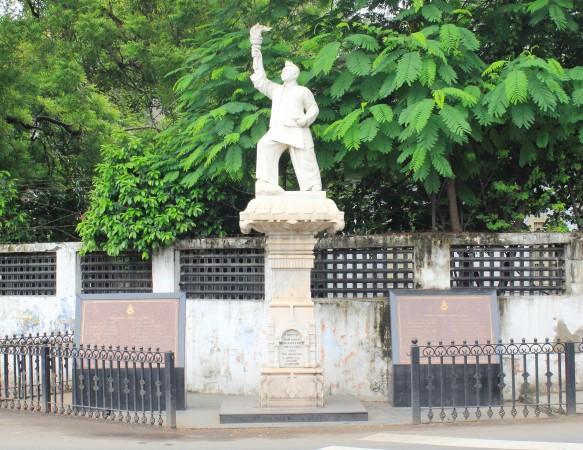
Shahid Smarak - © gather
Must-Try Dishes in Udaipur
In Udaipur, you’ll find delicious regional flavors that highlight the culinary traditions of Madhya Pradesh. From Dal Bafla, a traditional dish features wheat dough balls cooked to perfection and served with a rich lentil curry, ghee; to Poha, a light and flavorful breakfast dish made with flattened rice, spices, and topped with fresh coriander and sev, making it a must-try for anyone visiting the area.
Daal-Baati-Churma
When in Rajasthan, Daal-Baati-Churma is an absolute must-try. This iconic dish features baked wheat balls (baati) served with a spicy lentil curry (daal) and a sweet, crumbled wheat mixture (churma). It’s not just food; it’s a celebration on a plate, often found at festivals and feasts, and a delicious way to dive into the region’s culinary traditions.
Pyaaz Kachori
Craving something savory? Pyaaz Kachori, a crispy pastry filled with a spiced onion mixture, is the perfect snack. Deep-fried to golden perfection and typically enjoyed with tamarind or mint chutney, this popular treat in Udaipur is a bite of local flavor you won’t want to miss.
Mirchi Bada
For those who love a bit of heat, Mirchi Bada is the way to go. Imagine spicy green chilies stuffed with a tangy potato filling, dipped in gram flour batter, and deep-fried until crisp. Served with chutneys, this street food favorite is sure to leave your taste buds tingling.
Mawa Kachori
If you have a sweet tooth, Mawa Kachori will hit the spot. This dessert takes the traditional kachori and fills it with a rich blend of khoya (milk solids), sugar, and cardamom. Deep-fried and golden, it’s a festival favorite, offering a sweet taste of Udaipur’s culinary charm.
Ghevar
Looking for something truly unique? Ghevar is a traditional Rajasthani sweet that’s as beautiful as it is tasty. Made from flour, sugar, and ghee, this disc-shaped treat is often adorned with silver leaf or dry fruits. Enjoyed especially during the monsoon season and the festival of Teej, Ghevar is a delightful way to experience the sweet side of local culture.
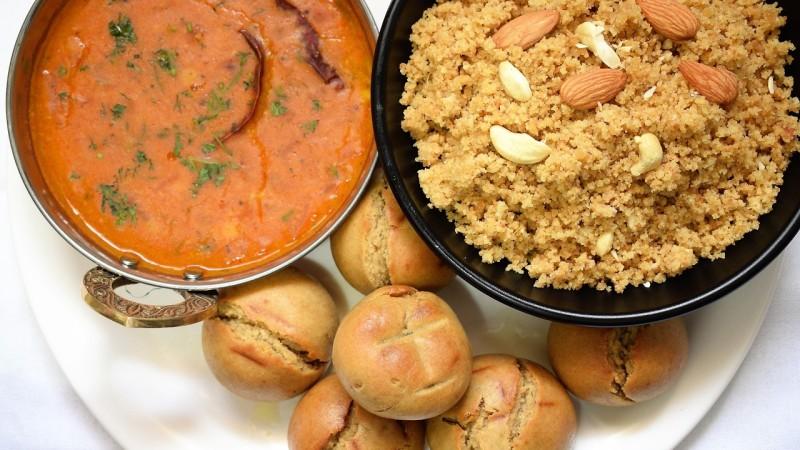
Daal Baati Churma - © gather
Festivals & Local Celebrations
Teej Festival
Time of Year: August (during the monsoon season)
Celebrated primarily by women in Udaipur, marking the arrival of the monsoon. Women dress in green attire, sing traditional songs, and participate in dance and rituals dedicated to Goddess Parvati. You can expect lively processions, cultural performances, and a showcase of local traditions.
Mewar Festival
Time of Year: Typically celebrated in April, coinciding with the Gangaur festival.
The Mewar Festival marks the arrival of spring and is celebrated with great enthusiasm. Visitors can witness a grand procession featuring beautifully adorned idols of Isar and Gangaur, paraded through the streets of Udaipur. The festivities culminate at Gangaur Ghat with traditional songs, dances, and a spectacular fireworks display, making it a vibrant cultural celebration.
Gangaur Festival
Time of Year: Celebrated for 18 days, starting on the first day of Chaitra (usually in March or April).
This festival is particularly significant for women, who dress in their finest attire to worship Goddess Gauri for marital bliss. The festival includes colorful processions, cultural performances, and the immersion of idols in Lake Pichola, showcasing the rich local traditions and community spirit.
Shilpgram Utsav
Time of Year: Usually held in December.
This crafts fair promotes the arts and crafts of Rajasthan and features stalls from various artisans. Visitors can enjoy workshops, cultural performances, and exhibitions that highlight rural life and crafts. The festival is an excellent opportunity to purchase handmade items and immerse in the artistic heritage of the region.
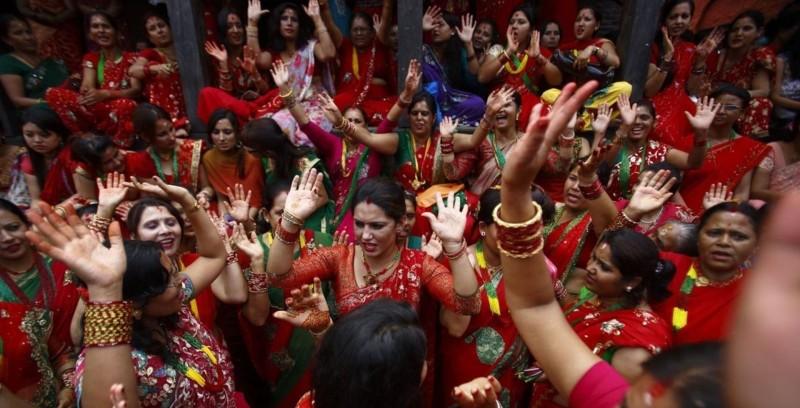
Teej Festival - © gather
Weather in Udaipur: Best Time to Visit
Udaipur has a hot semi-arid climate with three main seasons - summer, monsoon, and winter. The city experiences hot and dry weather for most of the year due to its location in the desert region of Madhya Pradesh.
Temperatures
- Average Temperatures: Range from 17°C to 32°C annually.
- Summer (March to June): Daytime highs can exceed 40°C. The record high is 46.4°C set in May.
- Monsoon (July to September): Temperatures are slightly cooler, ranging from 24°C to 32°C. The city receives heavy rainfall during this season.
- Winter (October to February): Days are warm with temperatures around 25°C, while nights can be quite cool, dipping to 5°C. January is the coldest month.
Rainfall
- Average Annual Rainfall: Around 700 mm, with the bulk of it coming during the monsoon season from July to September.
- July and August are the wettest months, receiving over 200 mm of rain each.
Best Time to Visit
The most favorable time to visit Udaipur is during the winter months from October to March when the weather is pleasant and ideal for sightseeing. Days are sunny and warm while nights are cool. The monsoon season from July to September brings heavy rainfall.
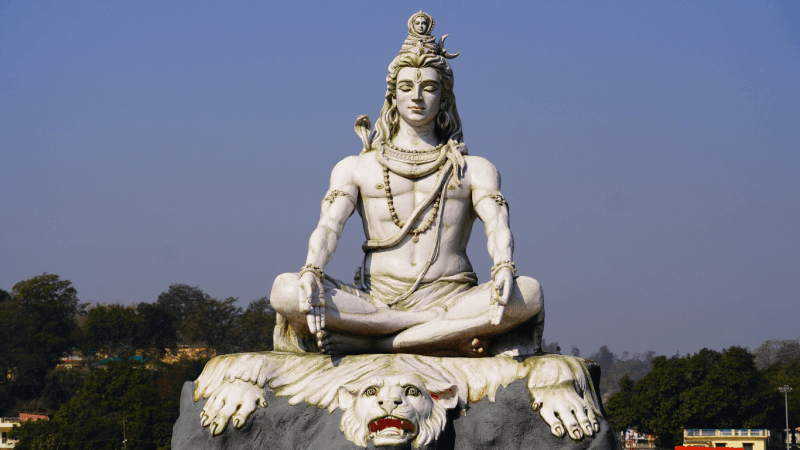
Hariyali Amavasya - © gather
Culture Etiquette in Udaipur
Greetings
Namaste: Greet locals with "Namaste," accompanied by a slight bow and hands pressed together in front of your chest. This gesture reflects respect and acknowledgment of the person's presence.
Dress Modestly
Visitors should dress modestly, especially when visiting religious sites. Both men and women should cover their shoulders and knees. Lightweight cotton clothing is advisable due to the hot climate.
Dining Etiquette
- Eating with the Right Hand: It is customary to eat with the right hand only, as the left hand is considered unclean. If dining with locals, be mindful of this practice.
- Sharing Food: Meals are often communal, and sharing food is a sign of hospitality. Accepting food offered by locals is polite.
Respect Religious Practices
- When entering temples, it is customary to remove your shoes and, in some cases, cover your head. Avoid wearing leather products and touching holy books or idols with your feet, as this is considered disrespectful.
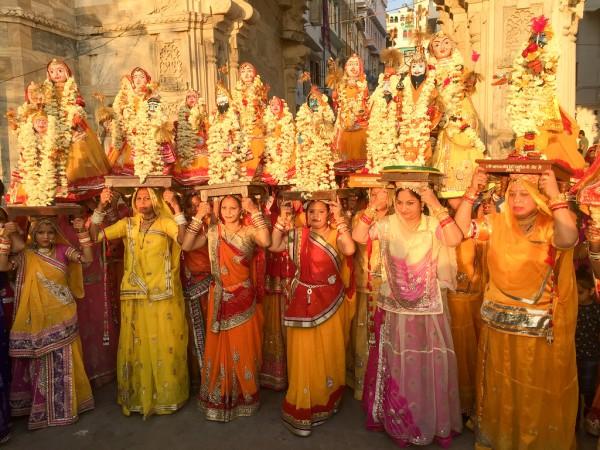
Gangaur Festival - © gather
Essential Travel Information
Getting to Udaipur
Air
Nearest Airport: The closest major airport is Raja Bhoj Airport in Bhopal, located about 100 km from Udaipur. Travelers can take taxis or buses from the airport to reach Udaipur.
Train
Rail Connectivity: Udaipur is accessible via nearby railway stations, with the closest being in Raisen and Sanchi. These stations connect to major cities in Madhya Pradesh and beyond, making train travel a viable option for visitors.
Bus
Bus Services: Udaipur is served by regular bus services operated by the Madhya Pradesh State Road Transport Corporation (MPSRTC) and private operators. Buses connect Udaipur to nearby towns and cities, providing an economical travel option.
Getting Around Udaipur
Taxis
Local Taxis: Taxis are available for hire within Udaipur and can be booked for local sightseeing or transfers. It's advisable to negotiate fares in advance or use a reliable taxi service.
Auto Rickshaws
Auto Rickshaws: Commonly used for short distances, auto rickshaws are readily available in Udaipur. They are a convenient and affordable way to navigate the town.
Local Transport
Bicycles and Motorbikes: Renting bicycles or motorbikes can be a fun way to explore Udaipur and its surroundings at your own pace.
ATMs
Several ATMs are available throughout Udaipur, including those from SBI and ICICI Bank, providing convenient access to cash for travelers.
Banking Services in Udaipur
State Bank of India (SBI)
SBI is one of the major banks in India, offering a range of financial services, including savings accounts, loans, and ATM facilities.
ICICI Bank
ICICI Bank provides various banking services, including personal banking, business banking, and investment options.
Fino Payments Bank
Address: 08, Brahma Nagar, Udaipur, Madhya Pradesh
Fino Payments Bank offers digital banking services, including savings accounts and money transfer services, catering to the needs of local residents and visitors.
Accommodation Choices in Udaipur
Udaipur offers a diverse range of accommodations, making it easy for visitors to find a place that suits their budget and preferences.
Luxury Hotels
For those seeking indulgence, Udaipur’s luxury hotels near Lake Pichola offer breathtaking views of the City Palace and the shimmering waters. These high-end properties often provide a royal experience, blending opulence with world-class amenities in a setting rich with history.
Mid-range Options
Travelers looking for comfort without the extravagance will find plenty of mid-range hotels and guesthouses throughout the city. Many of these are conveniently located in the city center or nearby, offering modern amenities and a charming atmosphere at a reasonable price.
Budget Accommodations
Backpackers and budget-conscious travelers will also feel at home in Udaipur, with a variety of affordable hostels and budget hotels. These are particularly concentrated in areas popular with backpackers, providing great value and easy access to the city’s major attractions.
Articles for you

Explore Yala National Park - Sri Lanka Travel, Asia
Tucked away in Sri Lanka’s southeastern corner, Yala National Park is where wild nature meets deep tradition. Known worldwide for its leopard population, the park is also home to elephants, sloth bears, crocodiles, and hundreds of bird species. Beyond wildlife, Yala opens doors to a cultural landscape dotted with ancient temples, Buddhist ruins, and coastal villages. For travelers seeking more than just a safari, Yala offers a chance to explore eco-tourism, local communities, and sacred heritage sites.
Population: The Yala National Park area doesn’t have a human population.
Economy: The economy around Yala National Park thrives on a blend of eco-tourism, agriculture, and local services. Safari tours, eco-lodges, and cultural experiences drive steady income for nearby towns like Tissamaharama and Kataragama, supporting thousands of families.
Landmarks: Famous for Block I of Yala and wildlife encounters, including elephants, sloth bears, crocodiles, and exotic bird species.

Explore Galle - Sri Lanka Travel, Asia
Nestled on Sri Lanka’s southern coastline, Galle is a vibrant city where history meets the sea. Its cobbled streets, colonial architecture, and serene beaches make it a must-visit destination for travelers seeking a blend of culture, adventure, and relaxation. A UNESCO World Heritage site, Galle captivates visitors with its Dutch Fort, bustling markets, and friendly locals. Whether you’re exploring the ramparts at sunset or savoring fresh seafood by the shore, Galle promises an unforgettable journey into Sri Lanka’s heritage.
Population: Approximately 113,000 in 2023.
Economy: Galle’s economy thrives on tourism, trade, and fisheries. The city’s historic fort, colonial architecture, and coastal charm draw thousands of international visitors each year, making tourism its main economic driver. Fishing remains vital for local livelihoods, supplying fresh seafood across the region.
Landmarks: Famous for the Galle Fort, Dutch Reformed Church & Maritime Museum, and Unawatuna Beach.

Explore Bentota - Sri Lanka Travel, Asia
Nestled along Sri Lanka’s southwestern coast, Bentota is a tropical paradise that blends golden beaches, vibrant culture, and thrilling adventures. Famous for its calm waters, luxury resorts, and scenic river estuary, Bentota has become a top destination for travelers seeking both relaxation and authentic experiences. From serene beach walks at sunrise to adrenaline-pumping water sports, this coastal town offers a perfect balance of leisure and exploration. With its proximity to Colombo and Galle, Bentota is easy to reach, making it an ideal stop for both short escapes and extended holidays.
Population: Approximately 37,000 in 2023.
Economy: Bentota’s economy thrives mainly on tourism, which drives local businesses such as hotels, restaurants, and wellness retreats. The town also benefits from fishing, coconut cultivation, and handicrafts like wood carving and batik textiles. Many residents rely on the growing demand for water sports and Ayurvedic treatments, making tourism the backbone of both income and employment in the area.
Landmarks: Famous for Bentota Beach, Bentota River Safari, and Kande Vihara Temple.

Explore Mirissa - Sri Lanka Travel, Asia
Mirissa is a charming coastal town on Sri Lanka’s southern shoreline. Known for its golden beaches, turquoise waters, and vibrant marine life, it has become a must-visit stop for travelers exploring the island. Many come for whale watching, surfing, and sunset views at Coconut Tree Hill, but Mirissa offers much more than postcard beauty. The fishing boats you see anchored by the bay carry generations of stories. Local traditions, delicious cuisine, and a laid-back rhythm of life shape every visitor’s experience.
Population: Approximately 4,700 in 2023.
Economy: Mirissa’s economy is largely shaped by its coastal location. Fishing has long been the backbone of local livelihoods, with generations relying on the Indian Ocean for income. In recent decades, tourism has become the main driver of growth, thanks to whale watching, surfing, and beachside hospitality.
Landmarks: Famous for Mirissa Beach, Coconut Tree Hill, and Parrot Rock Bridge.

Explore Nuwara Eliya - Sri Lanka Travel, Asia
Tucked away in the Central Highlands of Sri Lanka, Nuwara Eliya is often called “Little England”. With its rolling tea plantations, cool misty mornings, and colonial charm, this mountain town feels like a step into another world. Travelers come here to breathe fresh air, walk through flower gardens, sip the finest Ceylon Tea, and enjoy a pace of life far from the island’s busy cities. Whether you’re drawn by scenic landscapes, heritage architecture, or the warmth of its people, Nuwara Eliya is a destination that blends nature, culture, and history in perfect harmony.
Population: Approximately 781,000 in 2023.
Economy: Nuwara Eliya’s economy thrives mainly on tea production, as it sits in the heart of Sri Lanka’s central highlands, famous worldwide for Ceylon Tea. The city also benefits from a growing tourism industry, attracting visitors with its colonial charm, cool climate, and scenic landscapes.
Landmarks: Famous for Gregory Lake, Hakgala Botanical Garden, and Victoria Park.

Explore Sukau - Malaysia Travel, Asia
Nestled on the banks of the Kinabatangan River in Sabah, Malaysian Borneo, Sukau is a destination where wildlife, culture, and conservation come together. Known as one of Asia’s top spots for river safaris and eco-tourism, this quiet village offers a front-row seat to encounters with Bornean orangutans, pygmy elephants, proboscis monkeys, and exotic birdlife.
Population: Approximately 1,400 in 2019.
Economy: Sukau’s economy is shaped by its riverine location and natural resources. Traditionally, the Orang Sungai community relied on fishing, small-scale farming, and forest gathering for their livelihood. Today, the village has shifted toward eco-tourism, with river cruises, jungle trekking, and homestays providing income.
Landmarks: Famous for the Kinabatangan River cruises, Gomantong Caves, and Ox-bow lakes and wetlands.
